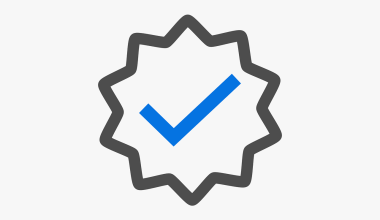The digital world has revolutionized how we consume and share content. If you’ve created a video, the next step is ensuring it reaches as many people as possible. The best way to achieve this is to share your video on all streaming platforms and multiple platforms simultaneously. This strategy maximizes its reach, boosts engagement, and amplifies its impact. Whether you’re a musician, content creator, or business owner, this guide will help you navigate the process with ease.
Why Sharing Your Video Across Platforms Matters
The internet offers countless platforms to showcase your content, from YouTube and Instagram to TikTok and Facebook. Sharing your video on all streaming platforms means you’re not limiting yourself to one audience. Instead, you’re tapping into diverse communities with varied interests.
When you distribute your video widely:
- You increase its visibility
- You attract a more diverse audience
- You boost engagement metrics, such as likes, comments, and shares
Preparing Your Video for Sharing
Before you start sharing, take time to optimize your video. A polished, professional video will perform better and make a lasting impression.
1. Ensure High-Quality Content
The first step is ensuring your video is of the highest quality possible. Check the resolution, sound clarity, and editing. Platforms like YouTube and Vimeo are ideal for high-resolution content, while Instagram and TikTok favor shorter, engaging clips.
2. Add Subtitles and Captions
Subtitles are essential for reaching a global audience and ensuring your content is accessible to everyone, including those who are hard of hearing or watching without sound.
3. Create Multiple Versions
Tailor your video for different platforms. For instance, a 30-second clip may work better on Instagram Stories, while a full-length version belongs on YouTube.
1. YouTube
As the second-largest search engine in the world, YouTube is a must. Optimize your video title and description with relevant keywords. Use engaging thumbnails to catch viewers’ attention.
2. Instagram
Instagram’s features like Stories, Reels, and IGTV make it versatile for sharing videos. Post regularly and engage with your audience through comments and DMs.
3. Facebook
With billions of active users, Facebook provides an excellent platform to share your video. Upload directly to maximize reach rather than sharing a link.
4. TikTok
TikTok thrives on short, creative videos. Adapt your content to match TikTok trends and challenges to increase your chances of going viral.
5. Vimeo
Vimeo is perfect for professional-quality videos. It’s widely used by filmmakers and artists who want to showcase their work in high resolution.
6. LinkedIn
If your video has a professional angle, LinkedIn is the ideal place. Share content that resonates with industry professionals and engages a niche audience.
1. Upload Directly Where Possible
Uploading videos natively (directly onto the platform) helps algorithms prioritize your content. For example, a video uploaded to Facebook will often get better engagement than one shared via a YouTube link.
2. Optimize for Search
Use relevant hashtags, tags, and keywords to ensure your video appears in search results. The more visible your video is, the higher its chances of getting clicks.
Tools like Hootsuite or Buffer allow you to post on multiple platforms simultaneously. This saves time and ensures consistent posting across channels.
4. Encourage Engagement
Ask viewers to like, share, and comment on your video. Engagement signals tell algorithms to show your content to more users.
Using Analytics to Improve Performance
Every platform provides analytics to track your video’s performance. Dive into metrics like views, watch time, and audience retention to understand what’s working.
1. Track Engagement
Monitor likes, shares, and comments. High engagement often translates to better reach.
2. Study Watch Time
Longer watch times indicate that viewers find your content valuable. This metric is particularly crucial on YouTube and Facebook.
3. Experiment and Adapt
If a video doesn’t perform well, analyze why and tweak your strategy. Experiment with different lengths, formats, and posting times.
Leveraging Paid Ads for Additional Reach
Organic reach is valuable, but adding paid promotion can give your video an extra boost. Platforms like Facebook, Instagram, and YouTube allow you to target specific demographics.
1. Set a Budget
Determine how much you’re willing to spend on ads. Even a small budget can make a significant impact.
2. Define Your Audience
Narrow down your audience by age, interests, and location. This ensures your video reaches people who are likely to engage with it.
3. Use Retargeting Ads
Retargeting ads help you re-engage viewers who may have shown interest in your content previously.
Common Mistakes to Avoid
1. Ignoring Platform-Specific Guidelines
Each platform has unique requirements for video dimensions, length, and content style. Ignoring these can reduce your video’s impact.
2. Neglecting Call-to-Actions
Always include a clear call-to-action (CTA) in your video or description, such as “Subscribe for more content” or “Click the link to learn more.”
3. Inconsistent Branding
Ensure your video has consistent branding elements, like logos, colors, and taglines, to make it instantly recognizable.
Conclusion
Sharing your video on all streaming platforms and multiple platforms is one of the best ways to maximize its reach and impact. By tailoring your content to each platform, optimizing for search, and engaging with your audience, you can ensure your video gets the attention it deserves. Use the tips shared here to start distributing your videos effectively and watch as your engagement skyrockets.
For further reading, explore these related articles:
- How to Share Your Album on JioSaavn as an Independent Artist
- How to Share your album on JioSaavn without a label
- How to Share Your Album on JioSaavn with No Upfront Fees
For additional resources on music marketing and distribution, visit DMT RECORDS PRIVATE LIMITED.






